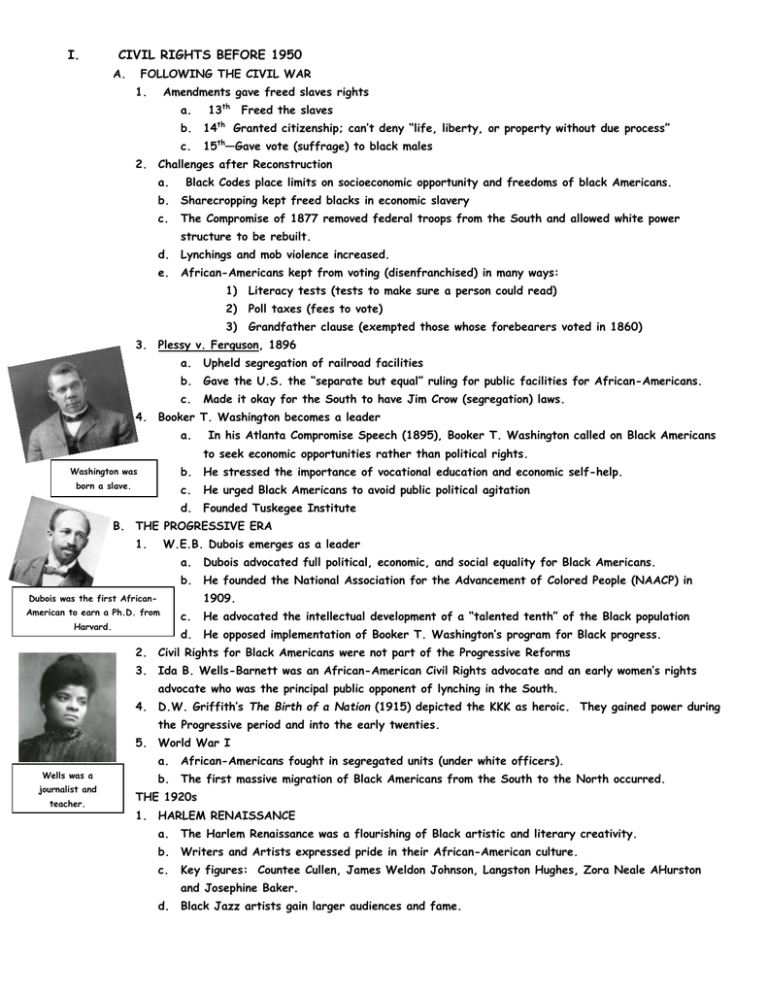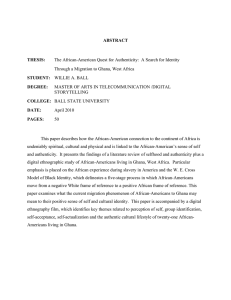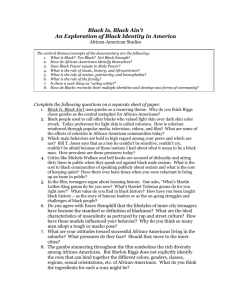I. CIVIL RIGHTS BEFORE 1950
advertisement

I. CIVIL RIGHTS BEFORE 1950 A. FOLLOWING THE CIVIL WAR 1. Amendments gave freed slaves rights a. 13th b. 14 c. th Freed the slaves Granted citizenship; can’t deny “life, liberty, or property without due process” 15th—Gave vote (suffrage) to black males 2. Challenges after Reconstruction a. Black Codes place limits on socioeconomic opportunity and freedoms of black Americans. b. Sharecropping kept freed blacks in economic slavery c. The Compromise of 1877 removed federal troops from the South and allowed white power structure to be rebuilt. d. Lynchings and mob violence increased. e. African-Americans kept from voting (disenfranchised) in many ways: 1) Literacy tests (tests to make sure a person could read) 2) Poll taxes (fees to vote) 3) Grandfather clause (exempted those whose forebearers voted in 1860) 3. Plessy v. Ferguson, 1896 a. Upheld segregation of railroad facilities b. Gave the U.S. the “separate but equal” ruling for public facilities for African-Americans. c. Made it okay for the South to have Jim Crow (segregation) laws. 4. Booker T. Washington becomes a leader a. In his Atlanta Compromise Speech (1895), Booker T. Washington called on Black Americans to seek economic opportunities rather than political rights. b. He stressed the importance of vocational education and economic self-help. Washington was born a slave. c. He urged Black Americans to avoid public political agitation d. Founded Tuskegee Institute B. THE PROGRESSIVE ERA 1. W.E.B. Dubois emerges as a leader a. Dubois advocated full political, economic, and social equality for Black Americans. b. He founded the National Association for the Advancement of Colored People (NAACP) in 1909. Dubois was the first AfricanAmerican to earn a Ph.D. from Harvard. c. He advocated the intellectual development of a “talented tenth” of the Black population d. He opposed implementation of Booker T. Washington’s program for Black progress. 2. Civil Rights for Black Americans were not part of the Progressive Reforms 3. Ida B. Wells-Barnett was an African-American Civil Rights advocate and an early women’s rights advocate who was the principal public opponent of lynching in the South. 4. D.W. Griffith’s The Birth of a Nation (1915) depicted the KKK as heroic. They gained power during the Progressive period and into the early twenties. 5. World War I a. Wells was a journalist and teacher. African-Americans fought in segregated units (under white officers). b. The first massive migration of Black Americans from the South to the North occurred. C. THE 1920s 1. HARLEM RENAISSANCE a. The Harlem Renaissance was a flourishing of Black artistic and literary creativity. b. Writers and Artists expressed pride in their African-American culture. c. Key figures: Countee Cullen, James Weldon Johnson, Langston Hughes, Zora Neale AHurston and Josephine Baker. d. Black Jazz artists gain larger audiences and fame. 2. Marcus Garvey a. Leader of the Universal Negro Improvement Association b. Identified with Black pride and nationalism c. He was committed to the idea of “Returning to Africa”. Garvey was eventually arrested and deported to his home country of Jamaica. D. THE GREAT DEPRESSION AND THE NEW DEAL 1. The New Deal helped African-Americans survive by not excluding them, but they were not directly addressed during this time period. Work Programs were still segregated. 2. African-Americans shifted loyalty from the Republican Party (of Lincoln) to the Democratic Party of Franklin Roosevelt. 3. During this time, Jesse Owens shocked Hitler’s Arian Nation by winning four gold medals at the Olympics (held in Germany) in 1936. 4. When famous African-American opera singer Marion Anderson was denied the right to sing in Constitution Hall by the Daughters of the American Revolution (DAR), Eleanor Roosevelt resigned her membership and invited her to sing on the steps of the Lincoln Memorial for Easter morning 1939. E. WORLD WAR II 1. Homefront a. Black migration from the South to the North and the West continued. b. President Roosevelt issued an executive order forbidding discrimination in defense industries. c. African-Americans made some headway during the war as they were needed for war industry jobs. 2. Black Americans continued to fight in segregated units. 3. African-“Americans earned respect as soldiers and were treated well by the Europeans when they served there during the war. 4. AS THE WAR ENDED a. Jackie Robinson became the first Africa-American to play professional baseball in 1947. b. President Truman issued Executive Order 9981 ordering desegregation of the armed forces in 1948. The first war with integrated troops was the Korean War. 1. Give three words that will help you remember what the 13th, 14th, and 15th amendments did… 2. How were African-Americans kept from voting after the Civil War? 3. What did the Plessy v. Ferguson ruling do? 4. What was Booker T. Washington’s philosophy? 5. How did Washington’s ideas differ from those of Dubois? 6. What organization did Dubois found? 7. What was Ida B. Wells-Barnett known for? 8. Who was D.W. Griffith? 9. How did WWI effect African-Americans? 10. What was the Harlem Renaissance? 11. Who was Marcus Garvey? What did he support? What happened to him? 12. How did the Great Depression impact African-Americans? 13. Who was Jesse Owens? 14. Who was Marion Anderson? 15. How did World War II influence the lives of African-Americans? 16. Who was Jackie Robinson? 17. What was Executive Order 9981? When was it first used?





